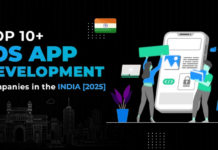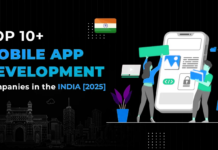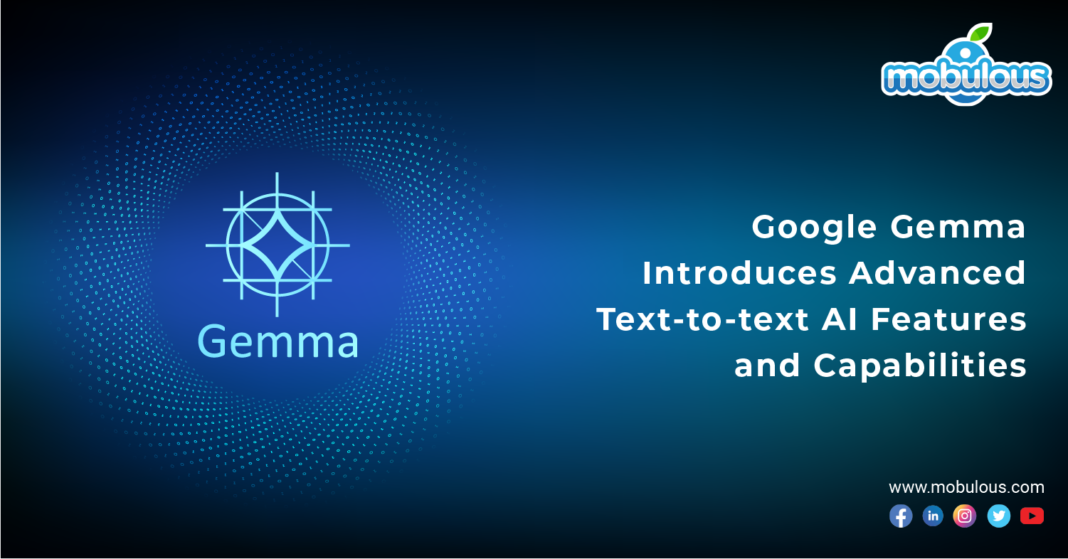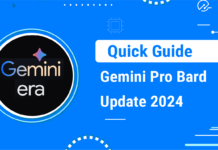Gemma is an experimental generative AI software program which is developed by Google. It is capable of generating natural language text in response to user’s questions or text prompts.
After ChatGPT Sora AI dominated the news feeds last week which is Open AI’s model for generating 1-minute videos from text prompts submitted by users, Google has now introduced its new open source AI models which are its latest and most delinquent open-source AI or Artificial Intelligence model.
In the past few months, Google has introduced its Gemini Pro models, i.e., large and mid-sized models. These were meant for complex and intricate tasks. However, the newly revealed AI model is a lightweight and smaller Gemma models. It aims at helping developers on a global scale to build AI responsibly, in compliance with Google’s AI principles.
Want to know all about this new open-source LLM powerhouse? Worry not, as we have come up with the best blog for developers and other intrepid professionals who want to seek knowledge about this new open-source AI model of Google. Let’s begin!
What is Google Gemma?
Gemma is a family of lightweight and state-of-the-art and best models consisting of Gemma 2B and Gemma 7B. It is built from research and technology that were previously used to create Google Gemini models.
2B is trained on 2T tokens and 7B is trained on 6T tokens. In addition, the models are generally trained on a context length of 8192 tokens and beat Llama 2 7B and Mistral 7B models on numerous standards. These best models consist of web documents, code, and mathematics.
This particular Artificial Intelligence or AI model architecture is entirely based on the transformer decoder with certain modifications including multi-query attention (used by the 2B model), multi-head attention (used by the 7B model), GeGLU activations, normalizer location, and RoPE embeddings.
They are text-to-text, available in the English language, decoder-only large language models (LLM), instruction-tuned variants, and pre-trained variants. The open source AI models are perfectly suited for a variety of text generation which includes question-answering, reasoning, and summarizing.
They are fairly small in size which makes it feasible to deploy them in environments with limited and fixed resources, including desktops, laptops, or your own cloud infrastructure, democratizing access to the advanced AI models, enabling foster innovation for everyone.
Also Check:- Healthcare Chatbots: 5 Amazing Benefits They Are Providing To The Patients And Healthcare Sector.
Gemma AI Features
Gema offers a suite of open-source, lightweight AI models that excel in text-to-text generation. It is available in English and these versatile tools are able to be customized for certain tasks like sentiment analysis, creative writing, and summarization all while adhering to Google’s responsible AI principles.
Let’s dive right in and understand some of the most crucial Gemma AI features of Google’s new supermodels which are listed below comprehensively.
Also Check:- How Artificial Intelligence can be used in Mobile Apps?
1. Generative Capabilities
Google has trained its new AI model on massive datasets of natural language using deep learning techniques, allowing it to gain an understanding of linguistic patterns. It can generate original text across a wide array of domains that determine cogency, relevance to the prompt, and even innovation and creativity.
This makes this open-source LLM powerhouse helpful for content writing, extending initial thoughts and opinions, responding to queries that mandate explanation, and several others.
Particularly, Google Gemma is proficient at text generation in fields as mentioned below:
- News and journalism: It can generate articles and long-form content.
- Fiction writing: It can craft stories, poems, dialogue, and other creative fiction.
- Academic writing: From reports and essays to literature reviews, Gemma can develop academic texts as well.
- Conversational responses: The model can generate back-and-forth dialogues and conversations just like a human.
It was specifically designed in order to generate text that gets constantly better through back-and-forth interaction and understanding more about what the user wants.
2. Evaluation Capabilities
Google Gemma AI goes further than just generating and rendering text. It can also examine, assess, and develop the most perfect content. This includes mastery as follows:
- Fact-checking: Recalling factual inaccuracies.
- Scoring essays: Assessing the quality and structure of the writing.
- Summarization: Forming brief and succinct overviews and sustaining key ideas.
- Comprehension testing: Forming questions in order to test the understanding of the passages.
- Analysis: Finding key arguments, implications, and applications of ideas.
This makes this open-source artificial intelligence and machine learning AI/ML model uniquely suited not just for generative pursuits and objectives but also for delivering feedback, support, and quality control for numerous human writers and other content creators.
For Any Query:- Seek help from Artificial Intelligence and Machine Learning Services!
3. Personalization
Personalization is another feature of Google’s new supermodels. It can learn the tone, preferences, and style of individual users for generating customized and tailored text.
The more prompts and feedback a user provides to Google Gemma, it will get a lot better at capturing their voice and interests. This makes it useful for mobile app development for customized writing suggestions, personalized news feeds, and individualized support.
4. Multilingual Capabilities
As we know the English generation is the main and crucial focus in today’s global era. For this, during the testing phase of Gemma, it has shown an ability to generate text in other languages as well.
Its training methodology uses comprehensive datasets, enabling Gemma AI models to adapt to new languages by maintaining it on large volumes of non-English text.
5. Multimodal Understanding
In addition to textual data, Google Gemma AI has some skills in analyzing and developing text sound images, videos, and audio clips.
This enables for use cases such as automatic captioning, describing multimedia context, and narrating the visual content.
6. Code Generation
As we all know software code shares some patterns with human languages, this open-source LLM powerhouse has exhibited some preliminary proficiency in generating simple codes in formats.
This includes SQL and HTML as per the textual prompts requesting it to build websites or database artifacts.
7. Uncertainty Detection
The new AI model not only aims to provide the generated text but also to offer a confidence score on the basis of how certain it is for the accuracy and appropriateness of its generation.
This enables the end users or targeted audience to understand when this open-source AI model is operating reliably and when its output will be uncertain and questionable.
Gemma: Use Cases and Expertise
Open-source Large Language Models, i.e., LLMs have a plethora of applications across several domains and industries. However, we have come up with a long list of potential uses in order to provide contextual information regarding the possible use cases that the model creators considered as a part of their model training and development.
Below are some of the most crucial use cases of Google Gemma AI. Make sure to read them carefully and precisely so that you don’t overlook any of them.
1. Content Creation and Communication
When users struggle to find the right and exact word for expressing their ideas, Google Gemma offers a powerful and robust “Content creation and communication” solution to users. It allows them to craft compelling and unique content, generate creative text formats, and draft engaging emails with the help of advanced language processing.
Whether you’re a writer, marketer, or simply someone looking to boost your communication skills, this innovative Gemma AI models can help you a lot in taking your message to the next level. Simply by making use of the power of text-to-text generation, Gemma empowers users with:
- Text Generation: This particular AI model will generate creative and appealing text formats such as poems, scripts, code, marketing copy, and email drafts that resonate with your readers.
- Chatbots and Conversational AI: It provides conversational interfaces in the form of chatbot AI for customer service, interactive applications, and virtual assistants.
- Text Summarization: This particular open-source LLM powerhouse has the potential to generate brief and concise summaries of research papers, text corpus, and reports.
For Any Query:- Seek help from Chatbot App Development Company!
2. Research and Education
In the ever-evolving world of research and education, the search for efficiency and deeper understanding is constant and highly required. This is the reason why Google Gemma has entered the field.
This particular open-source LLM powerhouse is a set of innovative and visionary AI tools that is poised to revolutionize the way researchers and educators approach their endeavors. By harnessing the power of text-to-text generation, Gemma empowers users with the following:
- Natural Language Processing (NLP) Research: This particular AI model is able to serve as a foundation for researchers in order to develop algorithms, experiment with NLP techniques, and contribute to the improvement and progress of the field.
- Language Learning Tools: They support interactive language learning ventures, assisting in providing writing practice or grammar correction.
- Knowledge Exploration: This particular open-source LLM powerhouse assists researchers in order to analyze and exploring large bodies of text by developing summaries or answering questions about explicit topics.
Gemma: Development and Future Plans
As we know Google Gemma empowers and makes users hire developers and researchers with top-notch text generation capabilities, and its potential prolongs beyond immediate use cases.
Well, this section delves into the ongoing and continuous development efforts and future plans for Google Gemma AI in order to explore how it will continue to evolve and shape the digital landscape of AI development.
Development Background
A team of AI researchers and engineers within Google’s advanced technology division developed Gemma over the last two years. They leveraged Google’s extensive expertise in NLP, i.e., natural language processing in order to build this AI model.
It utilizes advanced algorithms like BERT and large-scale training methodologies which are just like what was used to develop LamDa. The team of this open-source LLM powerhouse had access to massive computing capabilities in order to train AI models.
This facilitated them to instruct this open-source AI model on a huge trove of textual data, enabling the model to comprehend nuanced linguistic patterns and productive abilities that surpass most AI-developed languages previously.
Integration Plans
Now, it has been officially announced that a robust initial version of Google’s new AI model has been developed. Google plans to incorporate the technology into some of its products for consumers once its capabilities are mature.
- Search: Gemma can improve Google Search Results by generating additional descriptive passages that provide tailored context and answers in response to user queries.
- Docs: The unique and innovative abilities of this AI model can also be built into Google Docs in order to offer real-time writing suggestions, document structuring guidance, and edits as users create documents.
- Translate: Google promises to significantly enhance Google translate through this open-source LLM powerhouse, moving from simplistic word-for-word translation to preserving semantic meaning in a better way.
New Products for the Future
Entirely new products that are centered around this AI model are most likely to emerge in the upcoming future. Google can develop personalized news generators in order to create custom news articles on certain topics as per the interest of the users.
Intelligent writing tutors for students and mechanical creative friction tools illustrate other conceivable applications. Google Gemma will serve as a next-gen chatbot engine as well, powering more contextual and conversational chatbots.
Future Plans
Looking beyond initial product integrations, the team of this particular AI model foreseen additional research in order to improve the capabilities of the model over time. Their priorities include enhancing factual accuracy, and training the model on more niche datasets in order to enhance specialized domain knowledge.
It integrates multimodal inputs, including images and videos, and makes the uncertainty metrics and evaluation used by the model more robust and potent.
aspirational goal and vision of this AI model, i.e., Gemma is to reach new benchmarks in order to generate natural language that is useful, personalized, reliable, and human-like in pioneering new applications for AI-powered generative text models.
A Quick Review
Google is continuously expanding the Gemma model family and is looking forward to introducing new and unexplored variants for various applications. This particular AI model of Google acts as a testament to Google’s commitment in order to open and accessible AI.
It is lightweight design, focuses on responsible development, and has multifarious capabilities in order to make it a beneficial tool both for developers and researchers across various disciplines.
As AI models are constantly evolving, this open-source LLM powerhouse has the potential to further democratize Artificial Intelligence and unclose thrilling possibilities for the future. Hence, you should stay tuned for events and opportunities in the upcoming weeks in order to learn, connect, and build with Google’s new open-source AI model.
Frequently Asked Questions
Q. What is Google Gemma?
Ans. Gemma is an impressive family of Google’s open-source large language models, i.e., LLMs. Gema offers a range of open-source, lightweight AI models that surpass and outshine text-to-text generation. It is available in the English language and these adaptable tools are able to be tailored for specific tasks like sentiment analysis, creative writing, and summarization all while adhering to Google’s responsible AI principles.
Q. Is Gemma open source?
Ans. Yes, Google Gemma is proudly open-source that grants everyone free access and allows customization for various needs and requirements. This simply means that the underlying code and technical specifications are readily and freely available for anyone to access, use, and modify.
Q. What can I do with Gemma?
Ans. Gemma offers a plethora of applications which include the following:
- Sentiment analysis
- Text summarization
- Machine translation
- Creative writing
- Academic Writing
Q. Is Gemma free to use?
Ans. Yes, Gemma is completely free and open-source. It allows everyone to use it and then modify its models as per their needs and requirements.
Q. What are the different sizes of Gemma models available?
Ans. Generally, Gemma comes in two sizes, including 2B parameters and 7B parameters. It offers a balance between performance and resource requirements.
Q. How does Gemma compare to other AI models like LaMDA or GPT-3?
Ans. Gemma concentrates entirely on text-to-text generation tasks whereas LaMD and GPT-3 offer a vast range of capabilities with potential trade-offs in focus and performance.






























